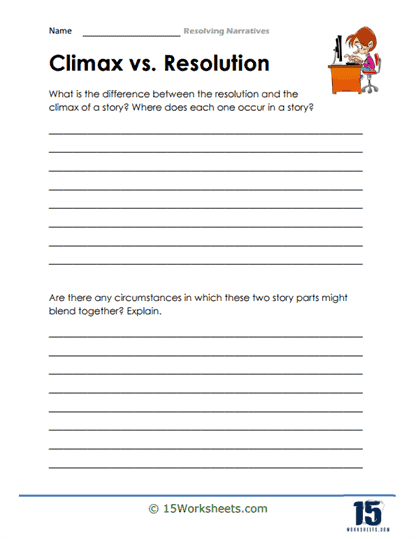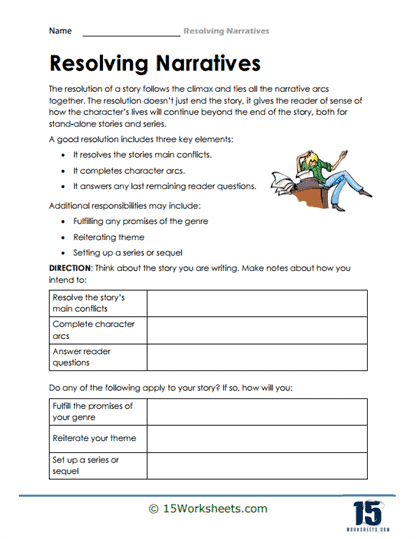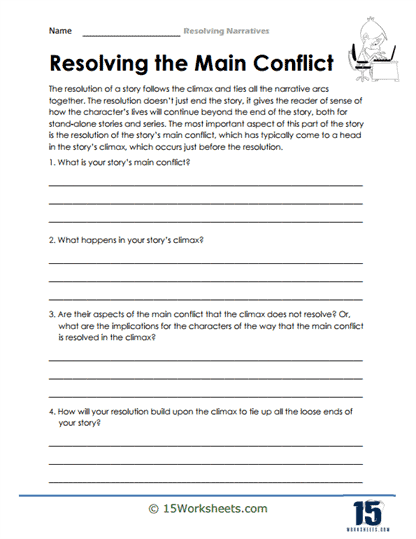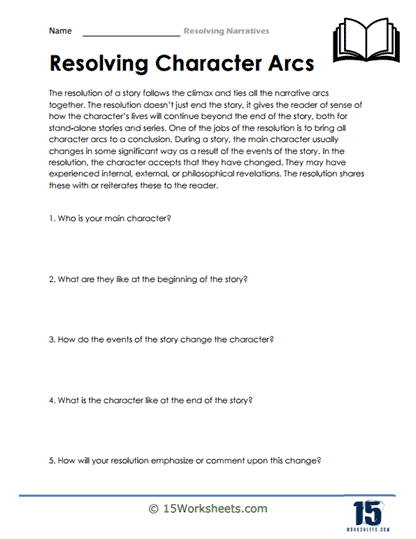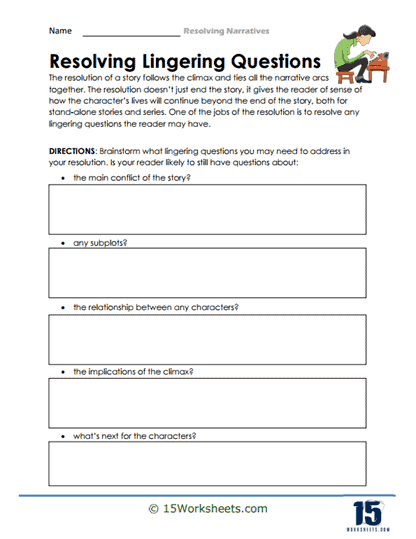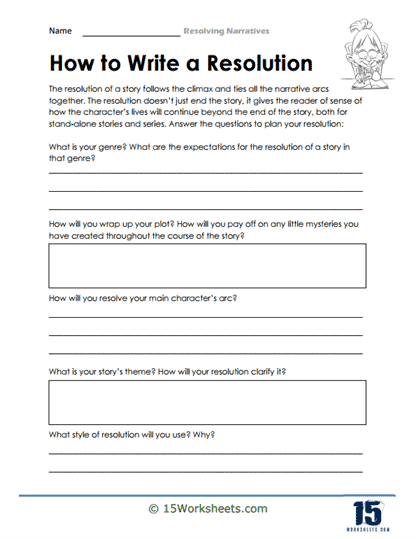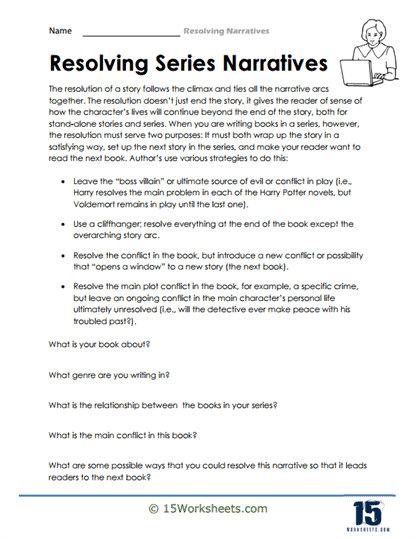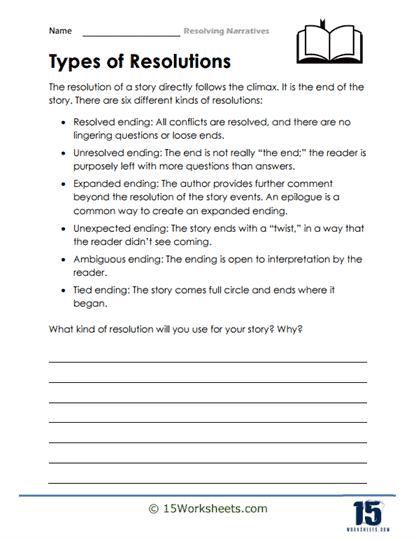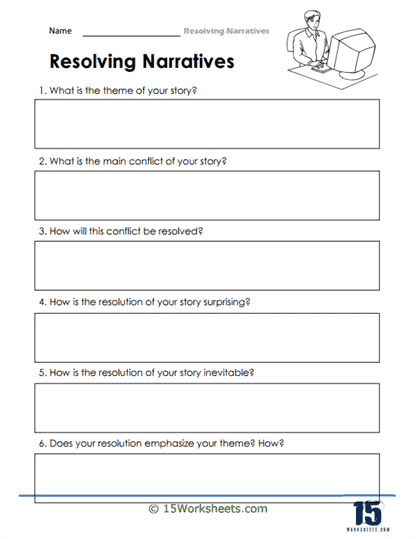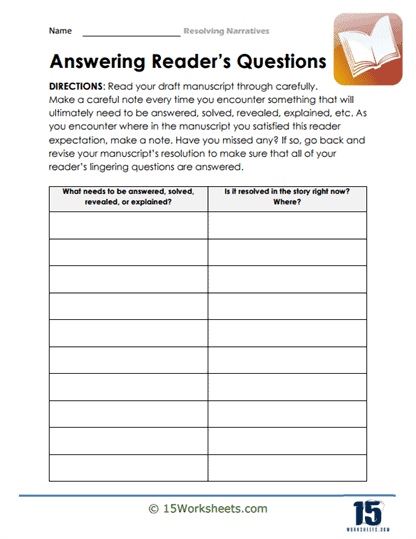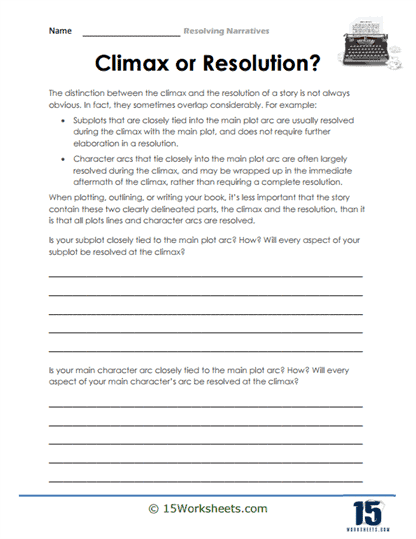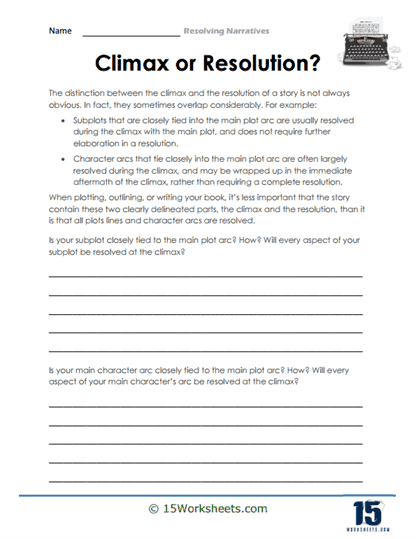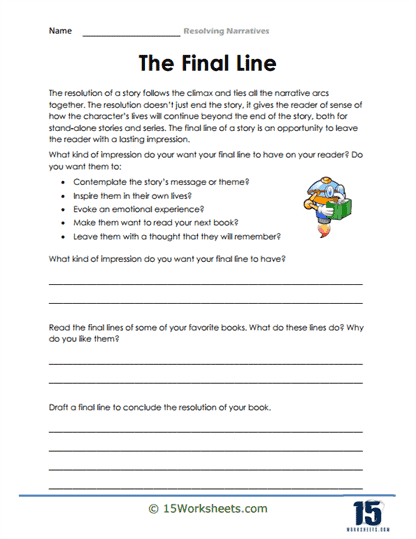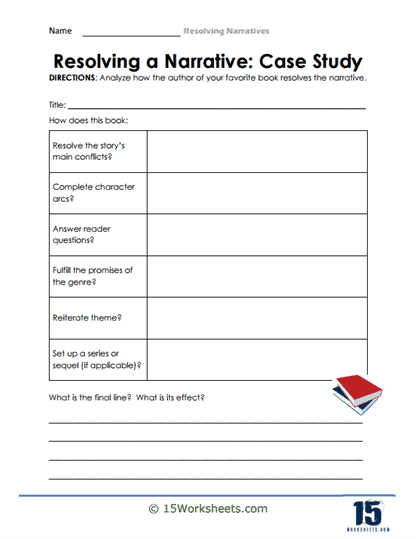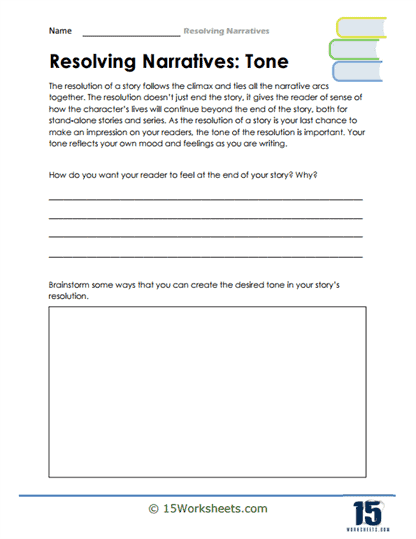Resolving Narratives Worksheets
All About These 15 Worksheets
This series of 15 worksheets is a comprehensive resource designed to help students master the art of resolving narratives and creating satisfying endings. The exercises provide students with guidance and exercises to develop their skills in crafting well-rounded conclusions, tying up loose ends, and delivering a sense of closure in their storytelling.
These worksheets empower students to bring their narratives to a satisfying resolution, leaving readers with a sense of fulfillment and closure. Through structured exercises and prompts, students learn essential techniques to tie together plotlines, reveal resolutions, and create a meaningful impact on their readers. Through these worksheets, students will:
- Recognize the different components of a narrative and understand how the resolution phase plays a crucial role in concluding the story;
- Develop character arcs that align with the overall resolution;
- Learn techniques to answer lingering questions, address conflicts, and provide a satisfying resolution that aligns with the overall narrative structure;
- And explore ways to evoke emotions, convey a sense of closure, and leave readers with a lasting impression.
This series is suitable for students across different grade levels and can be integrated into language arts classes, creative writing workshops, or individual writing projects. By using these worksheets, teachers provide their students with the tools to create well-crafted conclusions that resonate with their readers.
In summary, students develop skills in narrative structure, character development, and emotional impact. They learn to bring their narratives to a satisfying resolution, demonstrating their mastery of storytelling. This Resolving Narratives worksheets series empowers students to captivate readers, leave a lasting impression, and deliver narratives that are memorable and complete.
How Do Writers Resolve Narratives?
Writers resolve narratives by bringing the story to a satisfying conclusion, tying up loose ends, and addressing the main conflicts or challenges faced by the characters. The way a narrative is resolved can greatly impact the reader’s overall experience and impression of the story. Here are some strategies writers use to resolve narratives effectively:
- Resolve the Main Conflict – The primary conflict or problem faced by the protagonist should be addressed or resolved. This may involve overcoming an antagonist, achieving a goal, or finding a solution to a pressing issue. Resolving the main conflict gives the reader a sense of closure and satisfaction.
- Character Development – Show how the protagonist and other key characters have evolved or changed over the course of the narrative. This could include emotional growth, learning important lessons, or overcoming personal challenges.
- Tie up Loose Ends – Address any secondary plotlines or unanswered questions that were introduced earlier in the story. This might involve resolving minor conflicts, revealing the fates of secondary characters, or explaining mysteries.
- Reinforce the Theme – Use the resolution to reinforce or clarify the main theme or message of the story. This can be achieved through the protagonist’s actions, the outcome of the story, or the lessons learned by the characters.
- Emotional Impact – Create a resolution that elicits an emotional response from the reader, such as happiness, sadness, or a sense of wonder. This can make the ending more memorable and leave a lasting impression on the reader.
- Provide a Sense of Closure – Create a sense of finality by wrapping up the story in a way that feels complete and satisfying. This may involve a return to a familiar setting, a reunion between characters, or a glimpse into the future.
- Leave Some Ambiguity – In some cases, it may be appropriate to leave certain aspects of the story open to interpretation or unanswered. This can encourage the reader to think more deeply about the narrative and engage with the story on a personal level.
- Consider the Narrative Structure – The way a story is resolved may depend on its narrative structure. For example, a linear narrative might have a clear-cut resolution, while a non-linear narrative may require a more unconventional approach.
Ultimately, the resolution of a narrative should feel natural and satisfying, providing the reader with a sense of closure and a lasting impression of the story. The specific method of resolving a narrative will depend on the writer’s intentions, the genre, and the story’s unique elements.

